You’ve probably heard of flaxseed as it’s boomed in the world of health and wellness over the past few years. It’s now a popular ingredient in paleo recipes – especially desserts – and one that helps to sell packaged foods quite well.
Crackers and cookies boasting flax are given the green light, whether or not the food is actually healthy. If we’re dissecting a label, though, we’re certainly not going to knock on the addition of this nutritious little seed.
In fact, we’re going to applaud the effort because flaxseed is a true superfood.
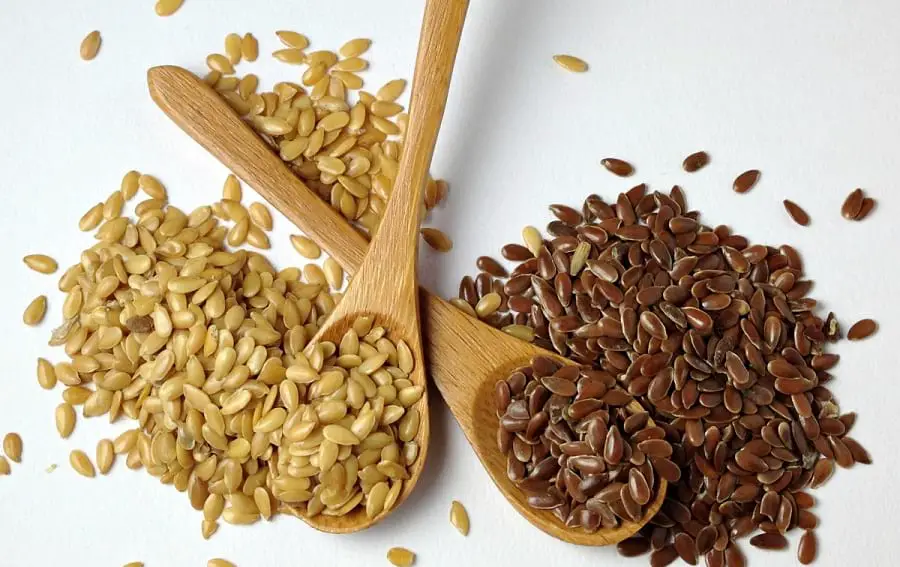
Perhaps you even have a stray bag of whole flaxseeds or flaxseed meal lying around in the pantry or fridge, but seldom reach for it. It’s a more versatile ingredient than most people give it credit for, on top of boosting big health benefits.
Benefits of flaxseed
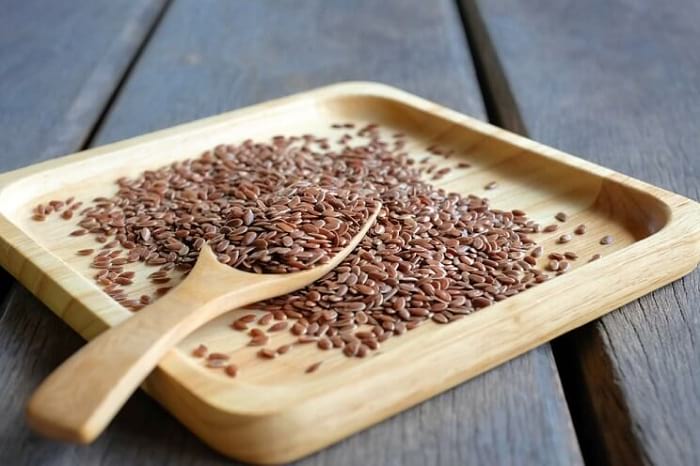
We wouldn’t just tell you to go grab a bag of anything without disclosing exactly why. We don’t rely on blind faith, here; we rely on the facts.
These tiny seeds pack in big nutrition. As they say, “big things come in small packages.”
- They’re full of fibre. Per 3 tablespoons of flaxseed, you get a whopping 8 grams of fibre! Gram for gram, flaxseed is one of the most competitive fibre-rich foods. Specifically, flaxseed contains mucilage gum, which is a type of fibre that forms gel and is water-soluble. In short, this means it’s great for digestion. Because it gels, it helps to hold food in the stomach for longer which initially sounds bad, but it aids in the emptying process to the small intestine. This increases nutrient absorption. It contains both soluble and insoluble fibre which help the colon detox and can aid in weight loss by keeping you fuller for longer.
- Alpha-linolenic acid. ALA is the most common omega-3 fatty acid, but that doesn’t mean we should be assuming we get enough of it. Flaxseed is a great source of ALA. These specific fatty acids can aid in maintaining good cardiovascular health, noramalising blood lipid levels, regulating inflammatory response, keeping blood pressure at a normal rate, and reducing the hardening of arteries. Basically, ALAs are fantastic for the heart.
- Digestion improvement. Both flaxseed’s fibre content and ALA content aid in digestion. ALA will naturally protect the lining of the digestive tract. Considering ALA can also reduce inflammation, supplementation with flaxseed can be especially helpful to those with Crohn’s disease or IBS. Its fibre content and magnesium content also help with digestion. Getting enough fibre (30-40 grams per day) can improve digestion immensely, and magnesium can work as a natural laxative.
- Reducing bad cholesterol. Keeping cholesterol levels happy is a good indication of overall health, and flaxseed is a great way to achieve this. This study shows that flax can decrease LDL (or bad cholesterol) – the blood cholesterol, not the kind you find in eggs!
- Supplement for weight loss. Adding flaxseeds to the diet is a good choice for those who have some weight loss goals. Its healthy fat and fibre content will help keep you satiated for longer. They’re naturally low in carbohydrates, so flaxseed consumption doesn’t spike blood sugar. In fact, it could help to regulate it which also aids in weight loss. Research shows that flaxseed and walnut consumption (both have similar properties) can influence management of metabolic syndrome – a precursor to diabetes.
- Promoting healthy skin and hair. Flaxseed can be used internally or externally as a supplement for healthy skin and hair. ALA provides the essential fatty acids our skin and hair thrive on, plus a dose of B vitamins that can help bring moisture to the body.
- Lignans. What the heck is a lignan? Oh, just a powerful antioxidant that flaxseed is jam-packed with, that’s all. These polyphenols do all the things a good antioxidant should do: provide benefits for anti-aging, balancing hormones, and promote good cellular health.
How to use flaxseed
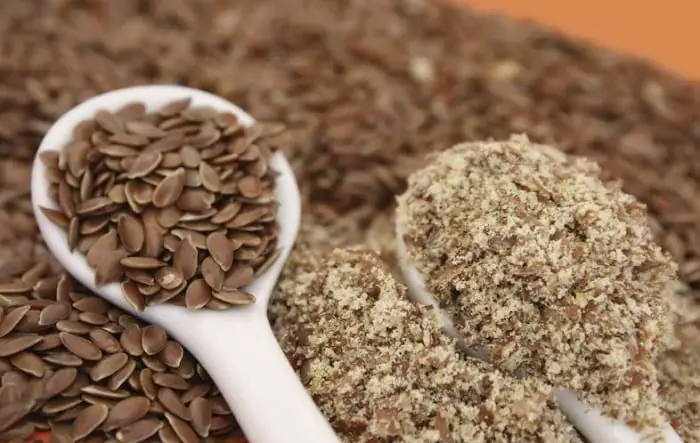
So, how do you eat it? You’re not going to pop into the kitchen in the morning to swallow your daily teaspoon of flaxseed!
Props to you if it’s your preferred method, but we especially love its ease of use and versatility in the kitchen. We’ll provide some recipe ideas below, but here are a few ideas… even beyond the kitchen.
- Make some dough. Flaxseed works well as both a binder and a flour which makes it suitable for working into any type of dough whether sweet or savory. You can’t really use it 1:1 for a grain-free flour replacement, but you can add it to healthy baked goods, keto cookies and muffins, pizza crusts, bread dough, and more to add texture and fibre.
- Sprinkle it on a salad. Like sunflower seeds, slivered almonds, or walnuts, flaxseed can be sprinkled on a salad to add a nutty crunch and all those health benefits we talked about before.
- Add it to a smoothie. Boost your green smoothie power even more with some flaxseed. You can mix the seeds in whole, blend them, or add a scoop of flaxseed meal (which will blend better) to the mix, and you’ll hardly even notice.
- Boost your breakfast. Beyond smoothies and salads, flaxseed works great mixed into yoghurt, oatmeal, or chia pudding. Its tendency to gel makes it a bit like chia seeds once it’s soaked for a bit. Plus, soaking makes for easier digestion.
- Make an egg substitute. If you’re avoiding eggs, a tablespoon of flaxseed set in two tablespoons of water will create a good binding agent which you can use for baking.
- Use it as a binder. Meatloaf or meatballs often call for breadcrumbs. If you have a tough recipe that you don’t know a good replacement for, flaxseed can work wonders.
- Use it as a breading. Flaxseed meal – especially mixed with some coconut flour or almond meal – can make a great breading for traditionally fried foods, or if you just want to spice up your meat dishes a bit.
- Make energy bites. Mix some flaxseed into your favourite energy bar or bite recipe. Simple, raw recipes held together with dates or other dried fruits are a good canvas for adding nutritious nuts, seeds, and powders to.
- Use the oil. Flaxseed oil is good for supplementation for similar benefits to fish oil, but it doesn’t make a good cooking oil due to its low smoke point. If you enjoy the taste, you could use it as a salad dressing. It’s also great for seasoning a cast iron skillet.
- Use it as a face mask. Because it gels, it’s a healthy addition for a DIY face mask or scrub. Mix it with egg, honey, or bentonite clay to nourish your skin.
Recipes with flaxseed
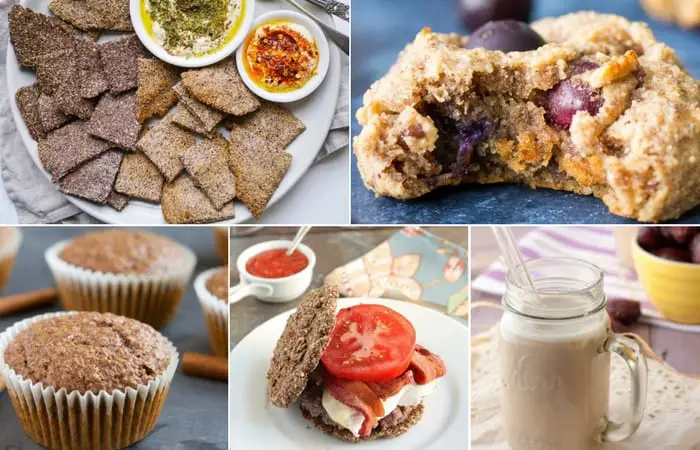
To give you an idea of how versatile flaxseeds truly are, here are a few recipes to inspire. They’re great for everything from healthy, digestion-friendly snacking to baking.
They’re an especially good ingredient if you’re following a low-carb plan or the keto diet.
- Low-carb crunchy flaxseed crackers from Nourish Everyday
- Banana & blueberry breakfast cookies from Paleo Running Momma
- Keto cinnamon bun muffins from The Healthful Pursuit
- Low-carb flax & Parmesan buns from I Breathe, I’m Hungry
- Homemade flaxseed milk from The Healthful Pursuit
- Flaxseed crusted chicken tenders from Inspiralized
- Flax, almond, & cacao bliss balls from The Good Food Goddess
Where to find flaxseed
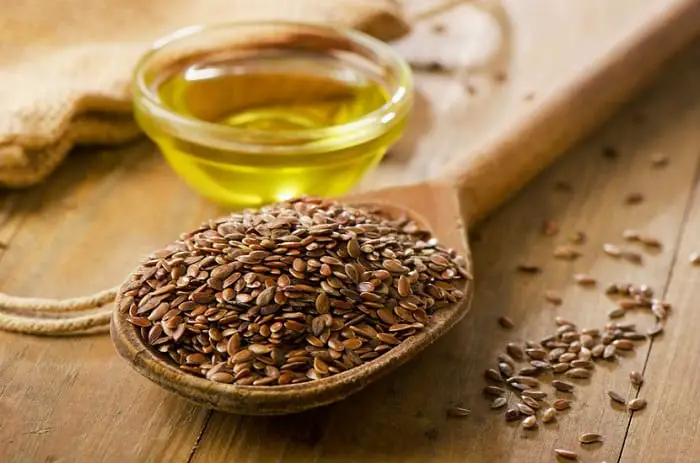
You can find flaxseed in most grocery stores now. Sometimes, it’s limited to the ‘health foods’ section, but it’s showing up more alongside standard baking ingredients.
You might find flaxseed meal or flaxseed oil, too. Look for these in the refrigerated section, as it’s important to store flaxseeds (once the package is open) in a cold space so they don’t go rancid.
You can also purchase flaxseed online here:
Flaxseeds are pretty neat, huh? These super seeds are a great addition to any diet whether it’s paleo, keto, or a plant-based approach.
Music, mountains, dogs, travel, food and friends.

